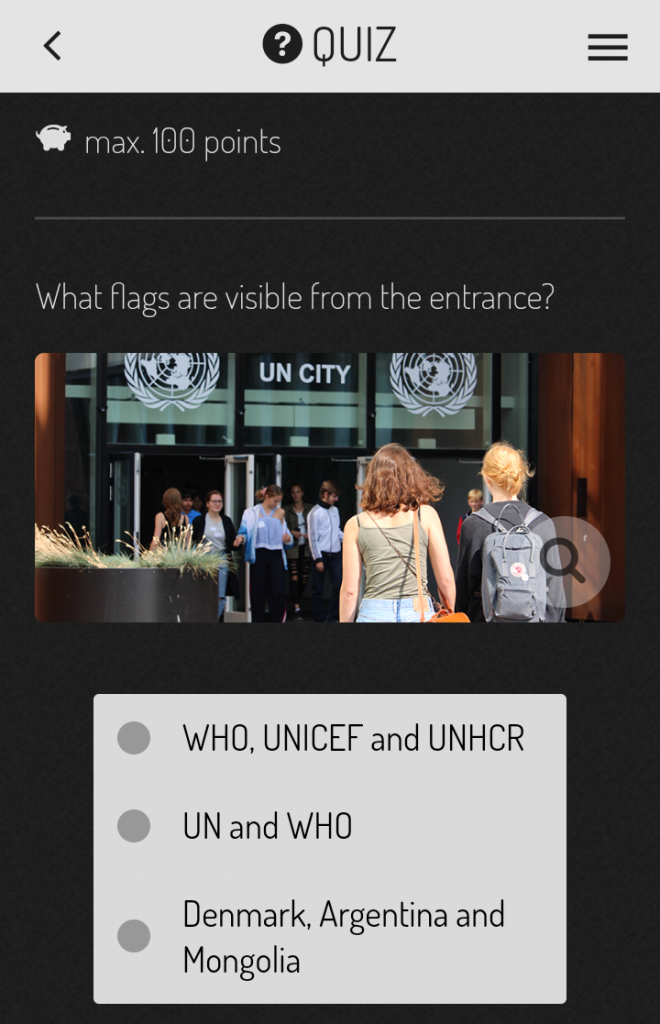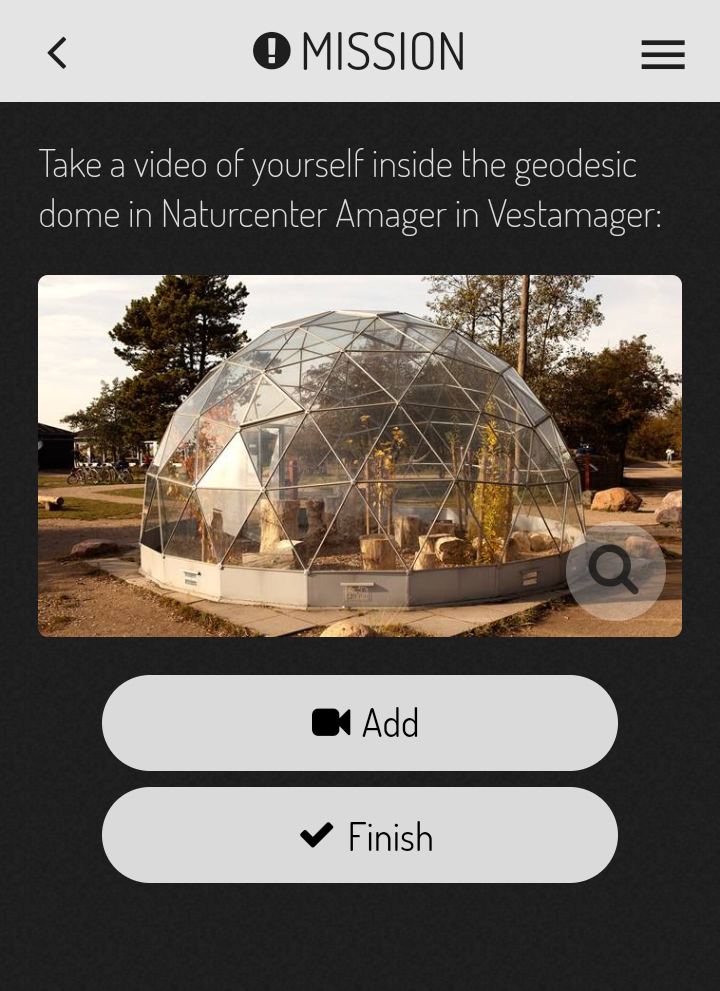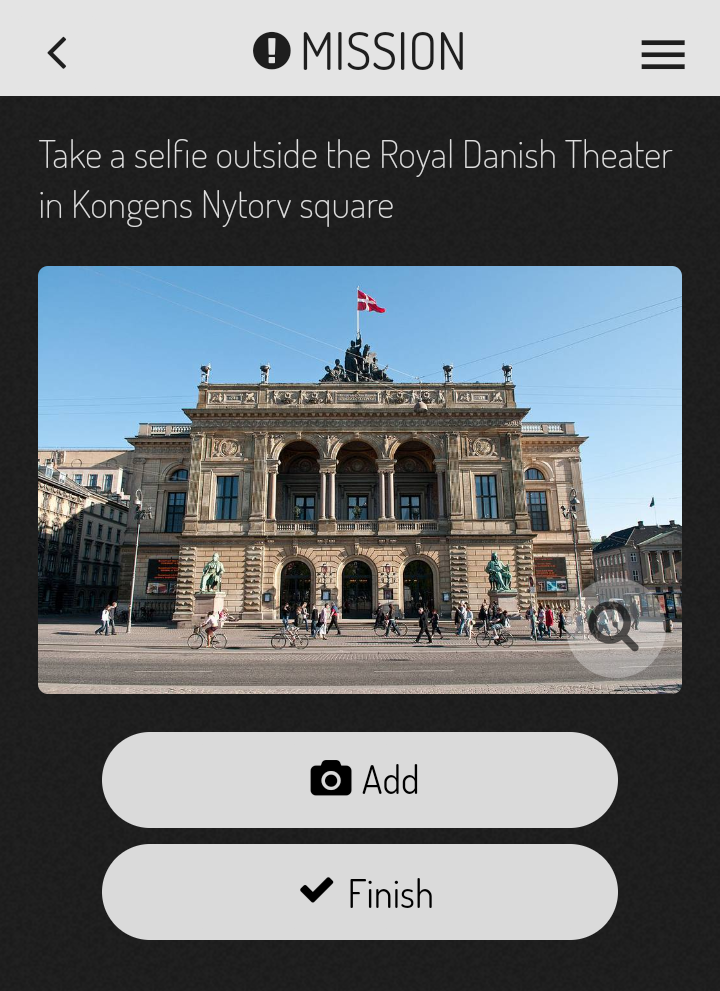I decided to create a Bound based on how I experience Copenhagen everyday when I make my way home from work. Being originally from Buenos Aires, and having lived in New York and Rome, Copenhagen seems to be a small big city, compared to the size and chaotic nature of the other three metropolis.
I haven’t driven in years (I actually do not have a valid driver’s license anymore!). This has allowed me to really experience the city in different ways. If I have some time to spare, I can take a detour on my route and check out what is happening downtown without getting off my bike. I can get off at the metro station close to home and walk a few blocks down to see the sheep and cows pasturing in the countryside (in Copenhagen!).
It is a very inspiring city for an Actionbound experience. The intention here was to make the “Really Nontrivial Effort” (Ritchie 2014, page 57) worthwhile for the audience or user. They will not only gain points as they hit the different spots and elements in the bound, but they will also learn interesting things along the way as they travel from the actual city to what seems to be the countryside. This is a not very well-known part of Copenhagen and people are always surprised to see how close they are to actually enjoying nature and wildlife within the city.
The first element in my Bound: Information element telling what the story is about:

I start the journey at the UN City, which in its own right is already an interesting piece of architecture, designed as a smart and green building. An affordance I noticed when using Actionbound is that as a designer or storyteller, you can choose to either define the sequence of the story or provide the user with the perceived freedom to choose their path. Perceived freedom, as they really are confined to the elements I designed. i mostly limited that freedom to the sequence I desired for my story.
The starting point: Find the UN City

Testing out my phone’s GPS capabilities:

The Quiz option presents another affordance with regards to how the user navigates between digital and physical spaces. In order to gain points and to move on to the next element on this digital media, the user must find out what the answer is by actually researching what the flags waving in front of the building are:

The answer to the quiz, option 2, UN and WHO flags as seen below:
 Next stop, another interaction between the physical and digital: uploading a selfie in front of a national landmark:
Next stop, another interaction between the physical and digital: uploading a selfie in front of a national landmark:
The following element is the one constraint I found with regards to this exercise which does not necessarily have to do with Actionbound but with digital media as a whole: the dependency on others and how one glitch in the the process can ruin the whole experience. While researching what QR Codes I could include in my story, I came across the Talking Statues project which according to their website:
“The project Talking statues, which started in Copenhagen today gives the opportunity to some of the most prestigious cultural figures from Copenhagen, Helsinki, London, and Chicago a chance to tell their own history to the passersby. With the new modern mobile technique, there is a completely unique opportunity for a new form of dissemination of our heritage in urban space through spectacular live demonstrations around the world: The statues come alive and tell their own stories with accurate human voice. In other words, Copenhagen statues and statues around the world are engaged in the new fantasy of the 21st-century mind and imagination, namely, to make possible the impossible through the latest technology!”
An exciting educational addition to my Bound! By scanning a QR code located on the statue, you would learn more about the figure. I remembered the QR code on Hans Christian Andersen’s statue and decided to include that in my project. When I tested the Bound, I encountered my one major frustration and disappointment as I realized the link I was redirected to when scanning the code was no longer working. When interacting with the digital and the physical, there are clearly things beyond my control, and in this case, it’s the Talking Statues project that failed to deliver.
It looked great in Actionbound:

And the QR code was there when I tested it out:

But the link was not working:
 I tried again with another statue, but same result:
I tried again with another statue, but same result:

I was hoping to come up with an alternative solution for the Scan Code element in Actionbound but i did not manage to materialize anything in time. As a result, this element was deleted.
Next stop, the Nature Center in West Amager (Vestamager). An amazing place in the South of Copenhagen, just 500 meters away from the metro station:
And my favorite, the last stop, a video uploaded from inside the dome:

My takeaways from this exercise are as follows:
- It was my first experience with locative narrative, or at least, it was with this type of technology. At first I was not entirely aware of the storytelling aspect involved in Actionbound. I had never associated apps like these with actual narratives, and as described in the key reading, an “embedded narrative” (Ritchie 2014, page 58). I know understand how Pokémon Go can be considered an “enacted narrative” (Ritchie 2014, page 58). with it’s tagline or slogan being Get Up and Go, motivating kids (and adults) to interact with their surroundings and with each other through their phones.
- The affordances and constraints, as described by Ritchie (2014), which I could identify in this exercise were mainly related to the functionalities Actionbound has to offer to enable storytelling between the physical and digital worlds. The issue of sequencing and guiding the user through the story, or letting them choose the way the create their own story, is an affordance of the tool. I mostly chose to limit them to ensure they followed a logical path from the UN City to the outskirts of Copenhagen, but I could have set up the narrative in a different way that allowed them to explore freely. This quickly turned into a constraint when realizing that I was forcing them to go through a step that was unsolvable (the QR Code).
- With regards to the notion of public space and space is general as described by Berry et. al, it opened up the concept even further. Berry was certainly on to something when he described space as “an imminent field of relations
that are in constant flux as bodies, material forms and images come into contact.” (Berry 2013, page 5). This was made evident in this exercise as the user had to constantly navigate and interact with the digital and the physical when moving through public spaces. The reading continues: “Public space more than often functions as a space between the virtual and the real, between labor and leisure, between work and home. In urban public space, the technology that sends us off into virtual worlds and the embodied experience of physical and mental meandering all but collide, forming a mise-en-scene that is all montage.” (Berry 2013, page 7). The public space represented through Actionbound by connecting the virtual and the real is even more palpable through this locative narrative. It is not the physical environment dominating here, with sprinkles of digital aspects embedded in the space, but an arguable equal balance of both environments interacting together, one not able to exist without the other in the context of the narrative.
References
Ritchie, J. 2014. The Affordances and Contraints of Mobile Locative Narratives. In The Mo- bile Story. Narrative Practices with Locative Technologies, ed. J. Farman, 53–67. Oxon: Routledge. This is a chapter from this book (with website wher you can download chapters).
Berry, C., Harbord, J. & Moore, R.O., 2013. Public space, media space, Basingstoke: Palgrave Macmillan: 1-15 (Introduction). Berry et al(2013)public space,media space.pdf ![]()


